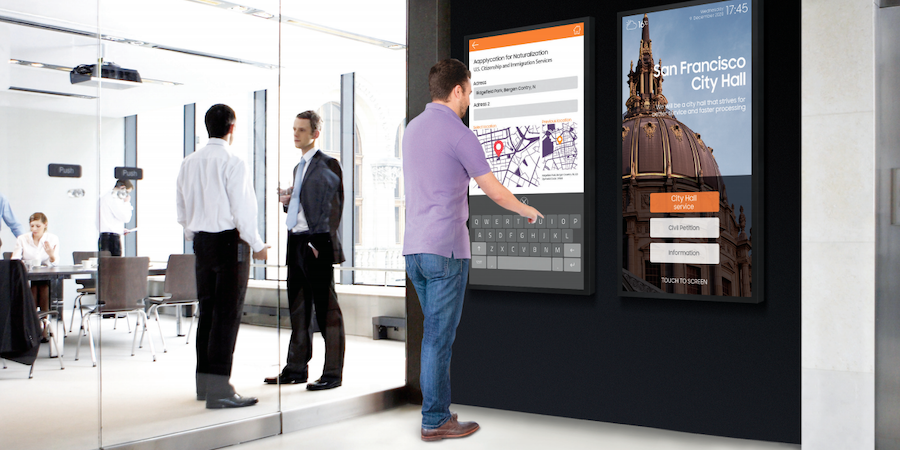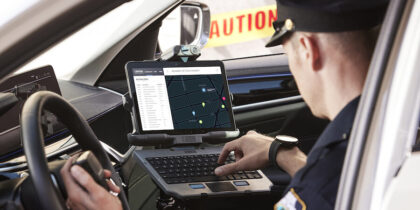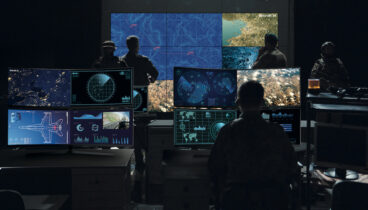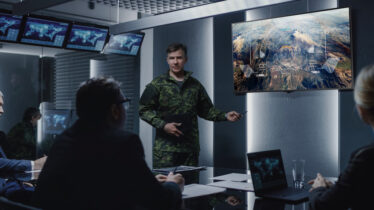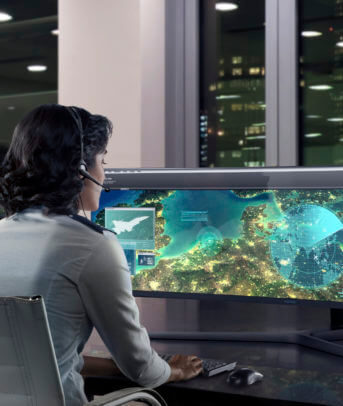Public agencies need surveillance video wall technology to help them see the big picture and fine details simultaneously. This is especially true because modern Internet of Things (IoT) devices make it easier than ever for governments to harvest, analyze and visualize data.
A modern video wall pours IoT data into a digital dashboard on a grand scale, providing real-time visibility on government operations in command centers, control rooms and operational headquarters.
That means there are a lot of considerations for agencies searching for the best way to harness, organize and act on all that data. For starters, displays must use secure, easy-to-deploy technologies that simplify and clarify the information needed to respond to emerging situations and all-out emergencies.
Public sector agencies should keep these points in mind when considering how best to implement video wall display technologies:
Simple setup
Samsung All-in-One IAC reflects a wave of simplicity coming to the world of giant screens. Setting up a video wall used to be complex and time-consuming, but those days are fading. All-in-one technologies now allow agencies to install giant-screen displays in as little as two hours.
These units have simple modular brackets and all the controls built into the unit. This saves your staff the time and effort of configuring a separate control unit. Furthermore, no cords are dangling and tangling below the display. Samsung displays also have built-in speakers, so there’s no need to buy peripherals.
Account for the content displayed
Think about the kinds of content your operations center staff will view. If you’re using giant displays to share fine details, like text and schematics, then you need to ensure the content is legible to everyone in the room — at any viewing distance or angle. Decision makers should account for these factors:
- Color accuracy and high contrast are critical for operators analyzing aerial, radar or seismic imagery, as decisions can be directly affected by subtle color differences. Orange versus red, or light gray versus dark gray, could be the difference between caution and emergency.
- Your best choice of management, control and switching technologies depends on your operating needs. In a busy control room, operators may want to toggle between different views on the main video wall and allow multiple operators to push information to the larger display.
- Control rooms and command centers tend to deal with sensitive information, so security has to factor into their choice of a video wall. The display shouldn’t hold any memory, and its secure operating software should be capable of encrypting and decrypting data.
- Ultra-high-resolution video feeds and images are handled differently by the two main types of displays used in video walls. A single flat-panel LCD screen can support 4K or even 8K resolution, while a direct view LED screen usually needs much larger dimensions to achieve the same resolution. Each LED is a single pixel; aggregating enough pixels to achieve 4K could fill an entire wall.
- Interactivity allows operators to walk up to the video wall and adjust information directly on the touchscreen — selecting items and zooming in and out just like they would on a smartphone.
Factor in spatial dynamics
To decide what display technology makes the most sense for your operations center, you’ll want to consider the viewing distances, lighting conditions and physical scale of the space. These elements are essential in making sure the display will be legible to viewers in the back of the room.
Secure your federal display technology
Get your free guide to the cybersecurity essentials for large-format displays in government agencies. Download Now
Control rooms are often imagined to be low-light, bunker-like spaces. That impression in large part results from older, projection-driven displays that could produce bright visuals only in a dimly lit room. But today’s all-in-one screens provide brightness technology that makes displays vibrant regardless of the ambient lighting, even if the room is filled with natural sunlight.
Understand the budgetary implications
Contemporary control rooms have three main video wall options — LED HDR, direct view LED and narrow-bezel LCD — each of which offers distinct benefits at different price points:
Video walls with LED HDR
Samsung All-in-One IAC uses a high dynamic range (HDR), which provides a superior viewing experience and a seamless canvas. LED HDR turns any content into HDR-level quality, and dynamic peaking technology analyzes content in real time, while at the same time managing power consumption. This produces a brilliant eye-catching display against any background. And the All-in-One IAC does this at a lower price point than other Samsung displays.
Direct view LED
Direct view LED video walls offer the advantage of flexibility. LED screens also tend to be much brighter compared to LCD screens, making them more effective in fully lit environments.
The cost of direct view LED is directly related to the screen’s pixel pitch; finer-pitch displays have a higher price point because they use thousands or even millions more LEDs than screens with a “coarser” pitch. The optimal pitch for your needs depends on the distance between your display and the viewers. An LED video wall with 2mm pixel pitch, for example, will look crisp to viewers seated at least 15 to 20 feet away, but any closer and legibility is likely to worsen, as viewers will see the borders of individual light pixels. For closer viewing, the optimal pixel pitch is 1mm to 1.5mm.
Narrow-bezel LCD
In most cases, narrow bezel LCD is the most budget-friendly option. When LCD screens are tiled to create a video wall, the bezels — the frames and edges of flat-panel displays — create gridlines, which are often more noticeable as bezel width increases. Display manufacturers have steadily narrowed these bezels to minimize the visible seams.
For control rooms that use their display for numerous simultaneous views — each in its own display block — the bezel seams may be inconsequential. But for schematics, line drawings and blocks of text that span multiple displays, these harsh borders can directly impact legibility and even create misinformation when the gridlines appear to be part of the on-screen information.
Choosing the ideal video wall
As you mull over video wall considerations, make sure you’re focusing on reliable, high-quality display technology. By thinking strategically about the factors above, you’ll have an easier time choosing the ideal video wall for your agency’s needs.
Planning a video wall installation is no small feat, but it’s easier with expert guidance. Learn more about utilizing video walls in the public sector in this free, complete guide. Also, discover the energy-saving benefits of LED displays like the All-in-One IAC.

